Tensions in Ukraine Show Why 'Nuclear Power Is the Most Dangerous Way to Boil Water'
"Calling for a no-fire zone around Zaporizhzhia is not enough," said Beyond Nuclear. "We must call for no nuclear power at all."
With Ukrainian and Russian officials trading accusations about a possible looming attack on Europe's largest nuclear power plant this week, global experts and campaigners are sharing fresh concerns about the facility and the energy source more broadly.
Russian forces invaded Ukraine in February 2022 and took control of the Zaporizhzhia Nuclear Power Plant (ZNPP) the following month. Since then, fighting near the facility—with six reactors that are currently shut down—has generated fears around the world and controversial references to the 1986 Chernobyl disaster, the site of which is located in present-day Ukraine.
In recent days, an adviser to Russia's nuclear agency has claimed Ukraine will imminently cause a nuclear disaster at the ZNPP while Ukrainian President Volodymyr Zelenskyy has warned of a potential false flag operation, claiming that "the Russian military has placed objects resembling explosives on the roof of several power units."
While International Atomic Energy Agency (IAEA) experts at the facility have so far not observed any visible indications of mines or explosives, the new accusations led the United Nations watchdog on Wednesday to request additional access—specifically to the rooftops of two reactors along with parts of the turbine halls and cooling system.
"With military tension and activities increasing in the region where this major nuclear power plant is located, our experts must be able to verify the facts on the ground," said IAEA Director General Rafael Mariano Grossi. "Their independent and objective reporting would help clarify the current situation at the site, which is crucial at a time like this with unconfirmed allegations and counterallegations."
"In a time of national crises in multiple countries, increasing natural disasters, and a worsening climate emergency, nuclear power is demonstrating that it is a liability rather than an asset."
The U.S.-based group Beyond Nuclear noted in a lengthy statement Thursday that "Zaporizhzhia is in the news now almost every day. The propaganda may be deliberately alarmist, but the basis for the alarm is very real or it would not be the subject matter for headline-getting in the first place."
"The reason is simple. Nuclear power is the most dangerous way to boil water. It is unnecessary, expensive, and an obstacle to renewable energy development," the group argued. "It is time to see sense. Calling for a no-fire zone around Zaporizhzhia is not enough. We must call for no nuclear power at all."
Highlighting that Russia's invasion of Ukraine is far from the only threat to the world's nuclear facilities, the group added that "in a time of national crises in multiple countries, increasing natural disasters, and a worsening climate emergency, nuclear power is demonstrating that it is a liability rather than an asset."
Beyond Nuclear also weighed in on the intense debate among activists, Ukrainian and Russian officials, reporters, scientists, and others regarding the dangers of a nuclear disaster at the ZNPP, offering a list of unanswered questions:
- Has the Zaporizhzhia nuclear plant in fact been wired for detonation and whose interests would be served by blowing up the plant?
- Why is there an exodus of both Russian and Ukrainian plant personnel?
- Will the sabotage of the downstream Kakhovka dam that resulted in catastrophic flooding also lead to an equally catastrophic loss of available cooling water supplies for the reactors and fuel pools?
- Will the backup diesel generators, frequently turned to for powering the essential cooling each time the plant has lost connection to the electricity grid, last through each crisis, given their fuel must also be replenished, potentially not possible under war conditions?
"None of these threats would make headlines if Zaporizhzhia was instead home to a wind farm or utility-scale solar array," asserted Beyond Nuclear. "This perhaps explains the rush now to downplay the gravity of the situation, with claims in the press that a major attack on the plant would 'not be as bad as Chernobyl' and that radioactive releases would be minimal and barely travel beyond the fence line. This is an irresponsible dismissal of the real dangers."
As the group detailed:
After the massive explosion at Chernobyl, the graphite moderator used in the reactor fueled the fire, with the smoke further lofting radioactive fallout far and wide. This has led to an assumption that major fires and explosions at Zaporizhzhia would result in less serious consequences since the reactor designs are not the same as Chernobyl's.
However, if the uranium fuel in the Zaporizhzhia reactors or irradiated fuel storage pools overheats and ignites, it could then heat up the zirconium cladding around it, which would ignite and burn fiercely as a flare at temperatures too hot to extinguish with water. The resulting chemical reaction would also generate an explosive environment. The heat of the release and detonation(s) could breach concrete structures, then loft radioactive gas and fallout into the environment to travel on the weather.
Fallout could contaminate crucial agricultural land, potentially indefinitely, and would include Russia, should prevailing winds travel eastward at the time of the disaster.
Some have suggested that an attack on the plant would not seriously threaten surrounding communities. The American Nuclear Society, for example, said Wednesday that "our experts have carefully considered 'worst-case scenarios,' including bombardment and deliberate sabotage of the reactors and spent fuel storage canisters. They cannot foresee a situation that would result in radiation-related health consequences to the public."
"ZNPP's six reactors have been shut down for over 10 months and are no longer making enough heat to cause a prompt radiological release," the society said. "ZNPP is designed to withstand natural and manmade hazards. Thick, steel-reinforced concrete containment buildings protect the reactor cores and are designed to keep any radioactive materials isolated from the environment."
"In the unlikely event that containment structures were breached, any potential release of radiological material would be restricted to the immediate area surrounding the reactors. In this regard, any comparison between ZNPP and 'Chernobyl' or 'Fukushima' is both inaccurate and misleading," the group added, referencing the 2011 disaster in Japan.
Matthew Bunn, the James R. Schlesinger professor of the practice of energy, national security, and foreign policy at Harvard Kennedy School, made the case at the Bulletin of the Atomic Scientists on Thursday that the biggest danger regarding the ZNPP is intentional sabotage.
"How serious is the risk of a major radioactive disaster?" Bunn wrote. "That depends on whether we're talking about an intentional or inadvertent radioactive release. If the Russian forces that control the site want to cause a major radiation release—and are willing to use explosives to do it—they could contaminate a huge area. Although the reactors have been largely shut down and cooling for months, they still contain a huge amount of intensely radioactive material that explosives could disperse."
He continued:
A couple of mines on the roof of a reactor would not be enough. Causing a big release would require some serious demolition with explosives. But that's what was needed to destroy Ukraine's Kakhovka dam—which it appears was done with explosives from within, while Russian forces controlled the site—so a similar operation at Zaporizhzhia can't be ruled out.
No one can accurately evaluate how big an area might be affected; the extent of contamination would depend on how the disaster was caused, how hard the wind was blowing, whether rain brought the radioactive material back to the ground, and more. But one could easily imagine that Russia might hope that such a release would interfere with Ukraine's counteroffensive, forcing some units to focus on evacuating people and cleaning up radioactive fallout rather than battling Russian forces.
By contrast, looking only at inadvertent damage, there are reasons to be optimistic. The Zaporizhzhia reactors are built with thick concrete containment structures, have been cooling for months, and have extra safety features installed after the Fukushima accident in Japan. It is very unlikely that a few stray shells from fighting in the area would cause any serious radioactive release.
Bunn concluded that "over the longer term, there's a need to rethink nuclear safety and security in the context of the possibility that nuclear facilities can be exposed to war, mass civil unrest, or governmental collapse. And there's a need for new agreements to reduce the chance that major civilian nuclear facilities under international inspection will again be targets of military assault."
Meanwhile, Beyond Nuclear charged that "if Zaporizhzhia comes to harm, each side in the conflict will likely hold the other responsible. But ultimately, the responsibility we all share is to reject the continued use of a technology that has the potential to wreak such disastrous consequences on humanity."
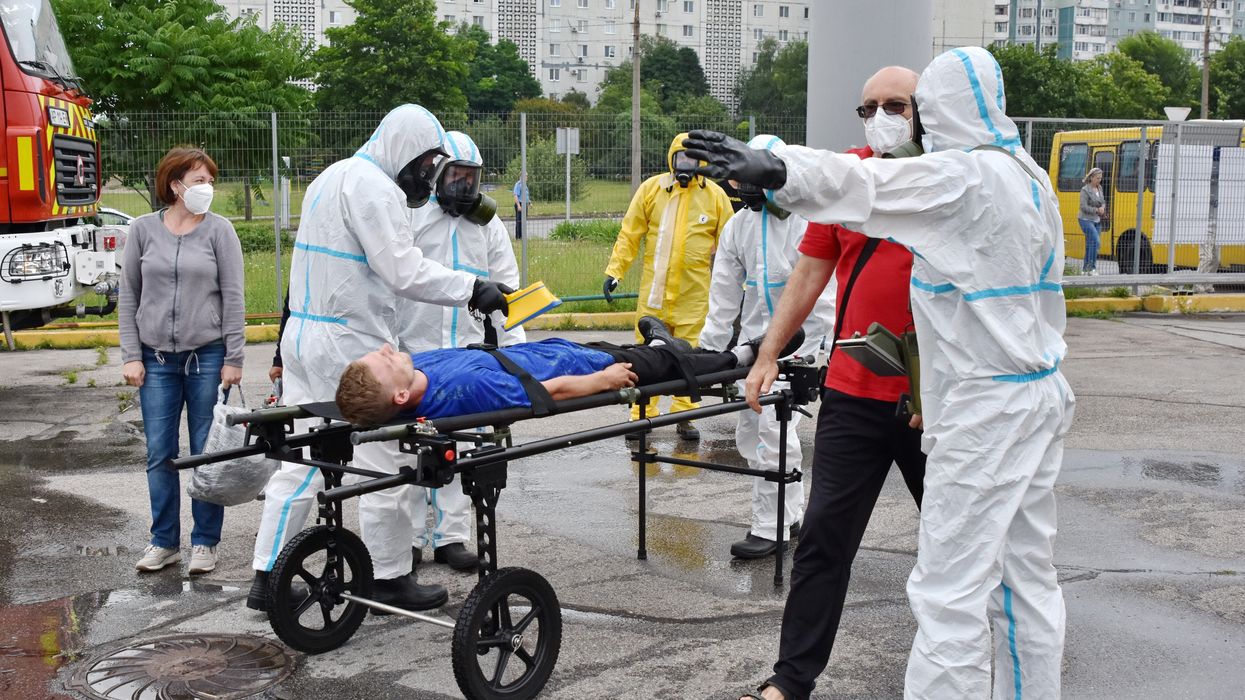
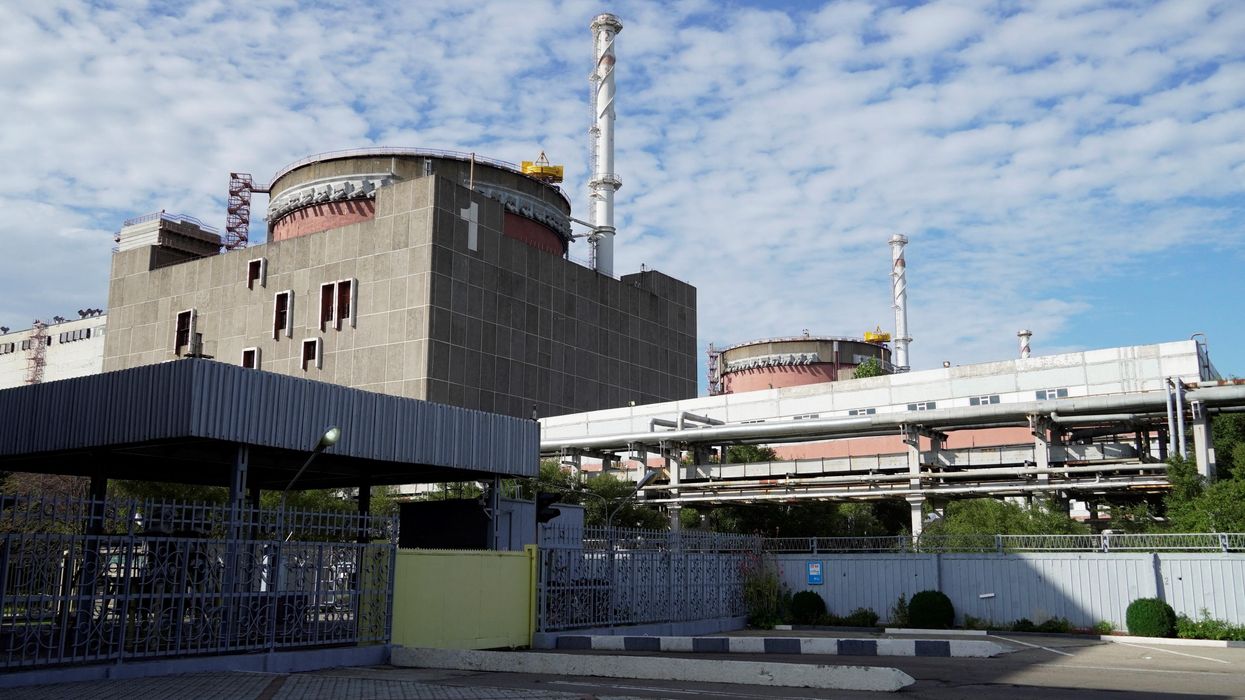
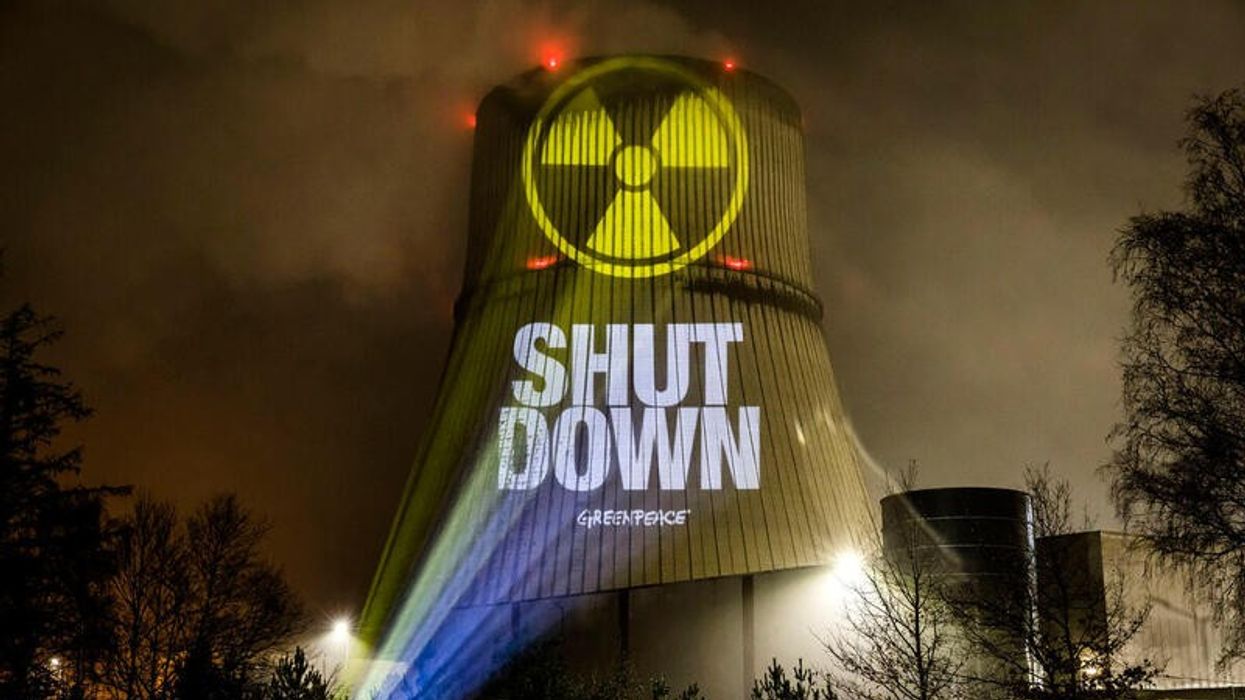
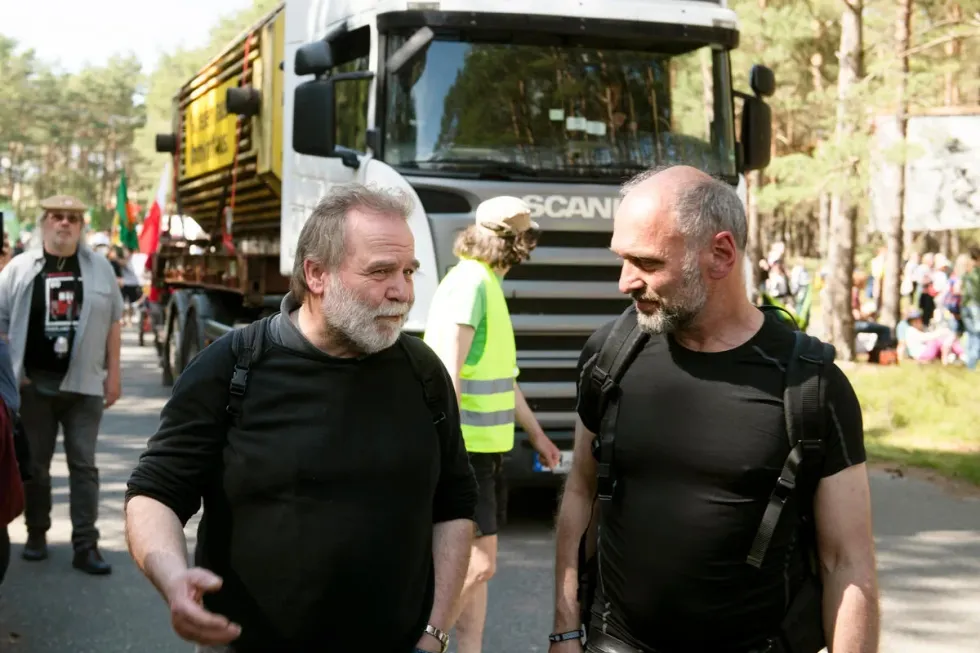 Roland Hipp (left) coverses with Greenpeace nuclear expert Heinz Smital in September 2020. (Photo: Michael Löwa/Greenpeace)
Roland Hipp (left) coverses with Greenpeace nuclear expert Heinz Smital in September 2020. (Photo: Michael Löwa/Greenpeace)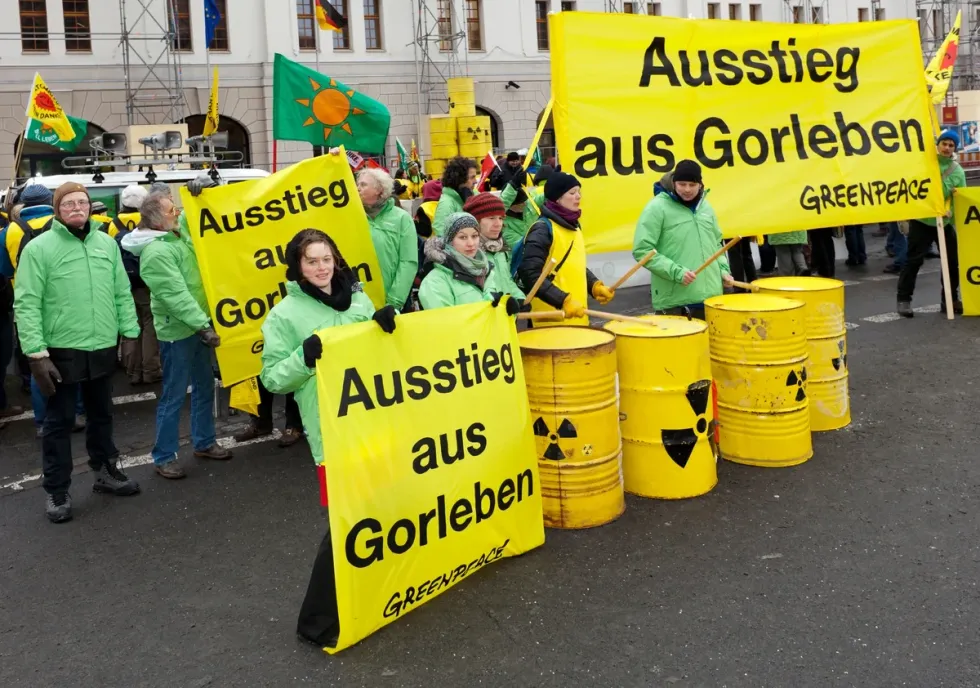 Greenpeace activists protest during the Bund-Laender Kommission meeting in Berlin against Gorleben as a possible nuclear waste final storage. (Photo: Paul Langrock/Greenpeace)
Greenpeace activists protest during the Bund-Laender Kommission meeting in Berlin against Gorleben as a possible nuclear waste final storage. (Photo: Paul Langrock/Greenpeace)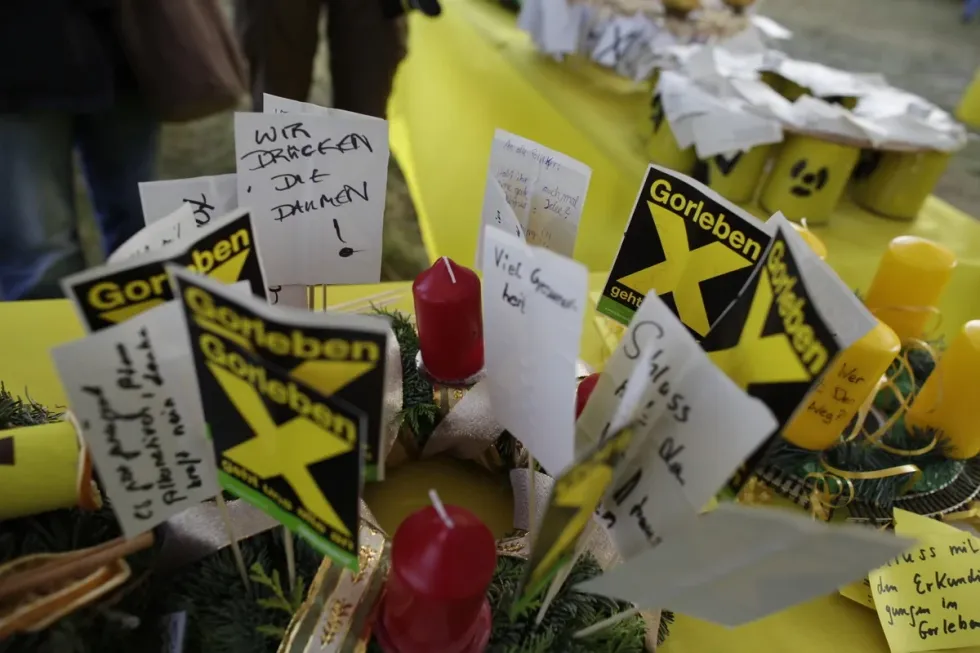 Greenpeace volunteers present Advent wreaths during protest against the Castor nuclear waste transport from LaHague to the intermediate storage Gorleben. (Photo: Gordon Welters/Greenpeace)
Greenpeace volunteers present Advent wreaths during protest against the Castor nuclear waste transport from LaHague to the intermediate storage Gorleben. (Photo: Gordon Welters/Greenpeace)